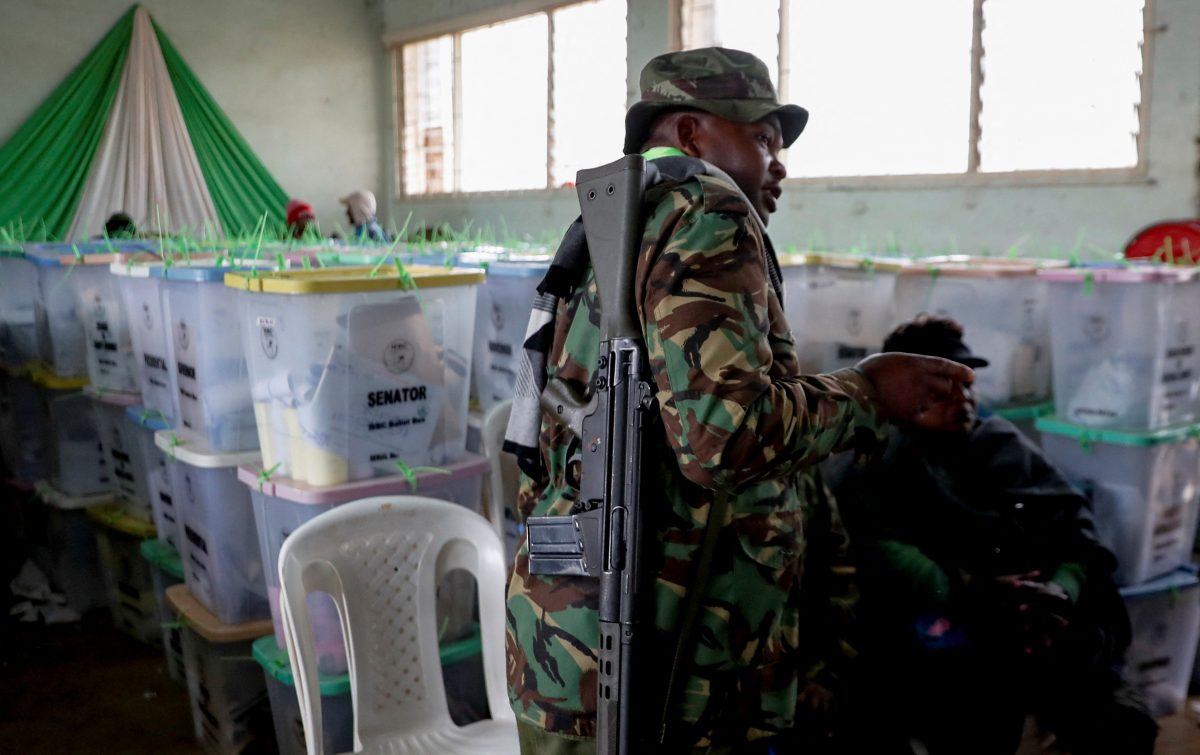NAIROBI, (Reuters) – Two days after Kenya’s general election, officials had yet to announce who is leading the presidential race in East Africa’s regional powerhouse, as confused citizens struggled to make sense of divergent tallies from the media in a nail-bitingly close race.
Media houses are compiling results from images of forms that the election commission uploaded on to its website from more than 46,229 polling stations, a mammoth task that means their tallies lag far behind the amount of raw data available.
Some citizens worried the media’s differing tallies could inflame claims of rigging, which have sparked violence in past elections. Many urged fellow citizens to wait for the official results.
“There is so much impatience due to media reports, because they are varying. Given the experience that we have in Kenya, we have to be patient and just wait,” said Ongao Okello, as he scrutinized newspapers being sold on a street corner in the western town of Eldoret.
Results are being watched carefully: Kenya is the region’s richest economy, a stable nation in a volatile region and a close Western ally that hosts regional headquarters for Alphabet GOOGL.O, Visa V.N and other international groups.
Veteran opposition leader and former political prisoner Raila Odinga, 77, is making his fifth stab at the presidency. He is neck and neck with Deputy President William Ruto, 55.
Outgoing President Uhuru Kenyatta has reached his two-term limit. He has endorsed Odinga for president after falling out with Ruto after the last election.
Kenyan election authorities have preceded with tallying cautiously, wary of the mistakes that caused the Supreme Court to nullify the results last time and order a re-run.
Media houses have filled the information gap by recruiting hundreds of people to manually input results from the images of results forms into spreadsheets.
Their tallies differ because results from polling stations were uploaded as they came in, and so each media group is counting at a different pace and not necessarily in the same order.
By 1200 GMT on Thursday, the privately-owned Nation group had tallied results from four-fifths of polling stations and put Odinga ahead with 50.40% of the vote and Ruto at 48.92%.
At the same time, privately-owned Citizen gave Ruto 49.48% of the vote and Odinga 49.12%.
The winning candidate must get 50% of the vote plus one to win, and at least a quarter of votes in 24 out of Kenya’s 47 counties. If there is no outright winner, there will be a second round of voting without the two presidential candidates currently receiving fractions of a point.
According to a Reuters tally of 66 out of 291 constituency-level results forms at 1100 GMT, Odinga had 52.69% votes and Ruto had 46.65%. Six forms uploaded on the site did not have totals or were unreadable.
Former U.S. president Johnnie Carson, a board member of the National Democratic Institute, said that the process needed to be trustworthy more than it needed to be fast.
“The technology should not outpace the trust and integrity the citizens have in the process,” he said.





